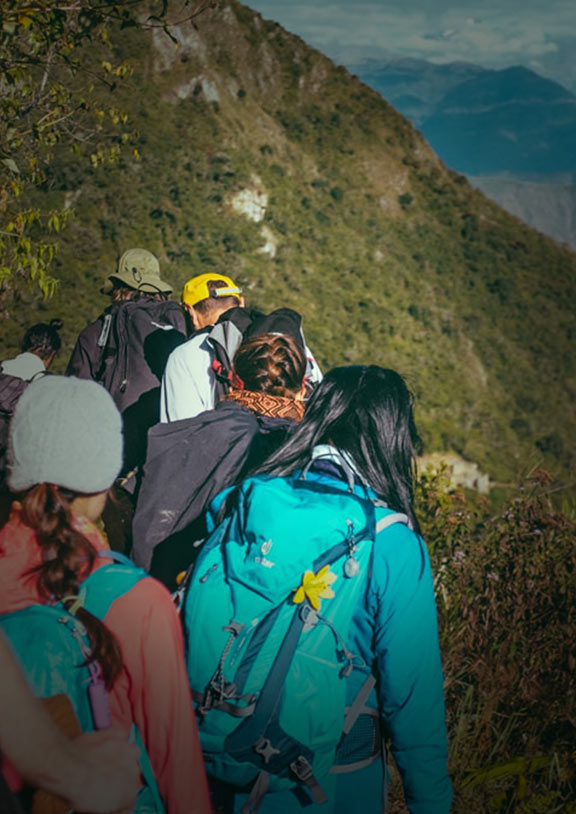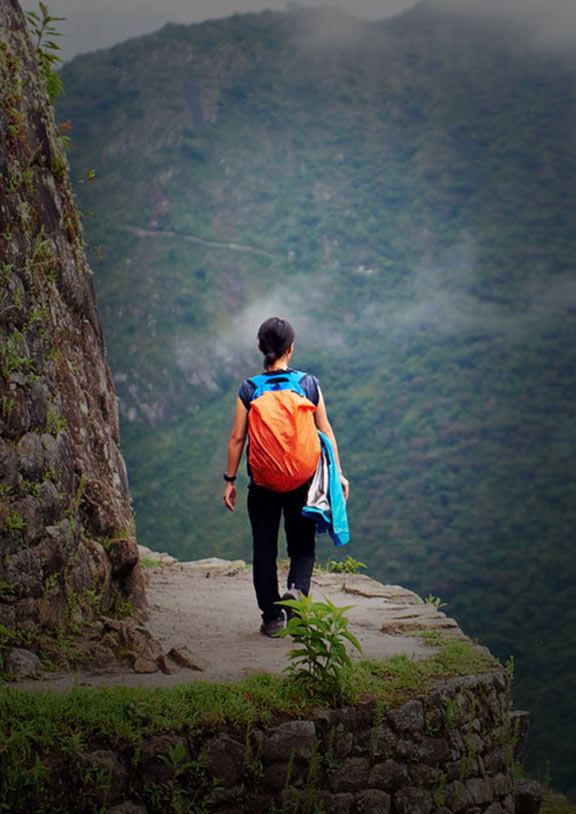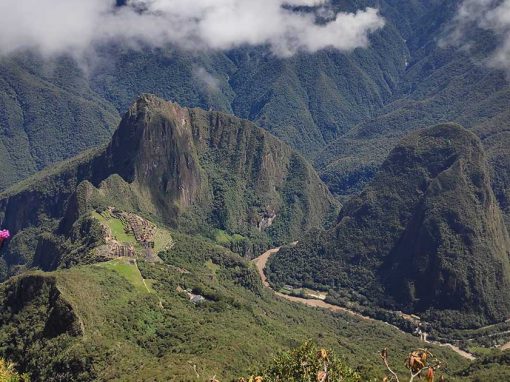The Inca Trail is a mystical trek along the well-trodden path of the Incas to the spectacular citadel in the sky, Machu Picchu.
Visitors to the citadel are amazed by the architecture, craftsmanship and technological skills of the city built by an advanced civilization that did not even use the wheel.
Walking along the trail is a privilege as you pass through Inca ruins, Quechua-speaking villages, and the breathtaking Sacred Valley.
Top ten insider tips for walking the trail
1. Book in advance!
Most travel agents will always tell you to book all your vacations in advance, but this is especially important when planning an Inca Trail trip. Due to such a high demand of visitors, coupled with the need to preserve the trail, the Peruvian government has severely limited the number of visitors per day.
Only 500 people are allowed onto the trail a day. That number includes guides, porters, and cooks along with trekkers. More often than not there are more trek ‘assistants’ than actual trekkers on the trail.
As a rule we recommend that you try to book your tickets at least three months in advance, and in the high season (June, July, August) at least five months in advance.
2. Here’s what to pack
You only need to take with you what you need for the trail. All tours will start from Cusco so you can leave any extra luggage that you may have with you in storage at your hotel in Cusco.
You are able to rent hiking backpacks through your trek operator or in Cusco for about $4 per day. Anything that you take with you, you will have to carry with you on the trail along with your sleeping bag.
We recommend that you take about four t-shirts (two for trekking, one of sleeping and one for emergency), a warm sweater for cold nights and mornings, gloves or mittens, a good all-terrain jacket or coat, some sweat pants, comfortable shoes, a pair of hiking pants, and socks for each day.
The sun at this altitude can be very warm so sun cream and a hat are essentials. Machu Picchu gets very hot in the day!
For those of you after a little extra luxury it is possible to rent a personal porter to carry all of your equipment for you up to the weight of 15kg.
3. Getting the most out of Machu Picchu
To make the most out of Machu Picchu you have to be there for sunrise. All treks that involve camping get you to the gates of Machu Picchu for the sun rise, with the only other people there being early risers from the town of Aguas Calientes. Day trippers from Cusco don’t arrive until much later in the morning.
As the sun rises, the Andean mist clears over Machu Picchu to show you the magical citadel in the sky. This is a sight that makes all your trekking worthwhile and fills you with an immense sense of achievement. It is a priviledge to walk in the footsteps as the innovative Incas all those centuries ago.
4. The extra trek – Huayna Picchu
Huayna Picchu is another peak available to climb from within Machu Picchu itself, providing stunning views over Machu Picchu and down into valley below.
Again numbers for this trail are limited. Only 400 are allowed up the track which takes about 90 minutes to climb up. 200 people are allowed in between 7am and 9am and then another 200 10am. Entrance is on a first come first serve basis so register your interest as soon as possible when in the Machu Picchu site.
5. When to walk the trail
You can walk the trail throughout the year, with the exception of February when the trail is closed for restoration and cleaning.
The wet season runs from November to March, yet this is the warmest part of the year. Walkers on the trail tend to experience a light drizzle that persists throughout the season. That said, many climbers have said that this adds to the mystical effect of the trail as you hike through the cloud-topped mountains. At this time of year much of the fauna is in full bloom making the colors on the trail intense.
The dry season runs from June to August and this is when the trail receives most of its visitors. At this time of year the nights and early mornings are very cold, so warm clothing is required. Less fauna is out along the trail, however trekkers are treated to much clearer views over the spectacular Andean mountain range.
You may like to time your tour to co-inside with the Inti Raymi Festival in Cusco during the Winter Solstice. The festival takes place every June.
6. Alternatives to the trek
If you have your heart set on following one of the many Inca roads, but you haven’t booked far enough in advance, it is still possible to visit Machu Picchu and complete another trail.
One of the less-explored Peru treks is to the site of Choquequirao. This trek takes you to an archaeological complex of enormous signicance, and it is thought to be the Incas last refuge during the final resistance of the Spanish conquest. The site is often referred to as Machu Picchu’s sister. However, because of its isolation much of the site remains unexplored and unlike Machu Picchu it is only accessible by trek, making it an isolated Inca gem.
Plan your own adventure to Peru. Don’t hesitate to contact one of our expert travel advisors to plan your own customized trip now!

Peru for Less is a group of travel experts who live, work, eat, and breathe all things South America. Their inspiration stems from a deep appreciation for the beauty and diversity that make this continent so special.









